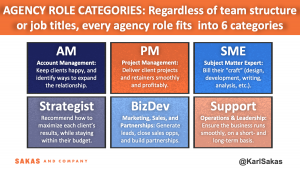September 6, 2016

If we look back at the Bureau of Labor Statistics’ (BLS) jobs report for the summer, the figures tell a more nuanced tale than stasis or small improvements. The good news is that businesses hired 5.1 million professionals. The bad news is that all industries, in aggregate, witnessed labor turnover rates to the tune of 4.9 million workers. The 0.2 percent difference would indicate that just as many people left their positions as came aboard. Other sources, such as Compensation Force, depict employee attrition rates close to 17 percent, based on a survey of 28,000 companies. That’s the highest level of churn since 2008, the dawn of the recession. What happens when turnover spikes? Organizations scramble to backfill positions, oftentimes creating opportunities for contingent staffing providers. However, backfilling is usually a short-term fix for what can be a longer-term issue. Instead of backfilling, let’s see how progressive filling can innovate a fresh approach to a stale situation.
In Through the Out Door
With fierce competition for skilled workers, retention and performance are two of the biggest concerns for employers. Even in contingent labor programs, it’s imperative that workers remain committed to the mission, see their assignments through and deliver high-caliber, on-time results. Findings by Impact Instruction Group reveal just how pronounced the issue of turnover has become today.
- Nearly one-third of people employed in their current job for less than six months are already searching for new career opportunities or employers.
- Close to one-third of executives who join organizations as external hires fail to achieve expectations during their first two years on a new job.
- With annual attrition rates of 10 percent to 15 percent, companies are turning over almost 60 percent of their entire talent base within four years.
Right now, retention has taken its place as one of the most important topics in conversations about the future of talent. There’s an even more pressing problem, however. Too many companies keep underperforming or mediocre talent, which hobbles their growth. Many rationalizations spring to mind: the workers are loyal, they have niche skills that would be hard to replicate, budgets are tight, recruiting takes too much time and so forth. In the end, many leaders settle on the compromise that an occupied desk is better than an empty one.
Yet continuing to rely on outdated recruitment methods, such as backfilling, won’t satisfy the needs of organizations in the fast-paced digital world. That’s why we need to examine an alternative approach to keeping businesses competitive, dynamic, inventive and pushing ahead.
Challenges with Backfilling
What is backfilling? In employment law, it’s the practice of replacing a departing worker as quickly as possible, regardless of whether the former individual left the company or simply moved into another position. The hope is to retain the same headcount with minimal disruption. In our industry, backfilling is more commonly used to replace a regular member of a corporate team during a long absence — planned or unplanned. In days past, the process was straightforward and relatively easy to accomplish. The mechanisms of commerce, production and service delivery in this century have contributed to new challenges.
Successful backfilling involves identifying positions with no redundancy and establishing sources to replace talent before a dire need arises. Our current economy, however, runs lean and mean. Very few positions offer inherent redundancy. And that creates hurdles.
- In desperate times, management level resources must step down into the trenches to sustain the momentum of the operation. This tactic unfortunately causes a leadership deficit during the interval, which can produce new obstacles or adverse impacts.
- Cross-training and ongoing development programs can prove effective in building an agile workforce populated by talent who become poised to assume new roles if a position suddenly vacates. Yet, workforce development, despite its popularity as a concept, lags behind in actual implementation or practice. Many organizations cite the costs and time involved as impediments.
- A growing majority of businesses and MSPs turn to staffing professionals. This is generally a fast and efficient solution. However, complications occur when hiring managers fail to communicate concerns, at-risk positions or anticipated demands to their MSPs or staffing partners.
Making Business Progress Through Progressive Filling
In the current online issue of ERE, organizational development expert Brian Formato explores how business cultures find themselves in periods of stagnation and why backfilling may not resurrect their productivity. He opens the piece with a well-known quote by Steve Jobs: “A players hire A players and B players hire C players.” Yet as I mentioned earlier, too many business leaders remain content to shuffle along with underperforming teams — until the crisis reaches a head and drastic steps become necessary.
“The typical approach that leaders take is to let the problem fester until it becomes too late,” Formato says. “At that point they are forced to take action and terminate the underperformer, creating a hole with no clear succession plan.”
It’s at this juncture where companies frantically contact contingent workforce professionals to backfill the positions. Unfortunately, this late-in-the-game effort can lead to losses in time, productivity and revenue. That’s why we need to propose a modern twist on backfilling — a proactive method of progressive filling.
Formato questions why we don’t use the same mindset with underperforming workers as we do with underperforming appliances. Think about it. If your computer is still running an operating system from seven years ago, you’re suffering. Programs take too long to load. They crash. The machine’s available memory can no longer handle the demands of current business tools. It’s become unreliable, unpredictable and incapable of taking you to the next level of your work. So what happens next?
You see an ad for new computers. They’re sleek, top-of-the-line performers that are already configured to address your existing and future requirements. You go online, research the options within your price range, narrow down the best fits and prepare to make a purchase. Ultimately, you’ve convinced yourself that you need a new model before the old one finally fails. This is where progressive filling takes the reins.
Identify Potential Performance Issues
“If you have an underperformer on your team, the best way to upgrade the position is to identify the replacement first,” Formato suggests. One of the core tenets behind Six Sigma is to seek out and identify defects in the process continually. It’s less pleasant than hoping or pretending that everything in the organization is hunky dory, yet it’s necessary for finely tuned operations. When you proactively spot pitfalls looming on the horizon, you can quickly forecast new needs — with the luxury of time.
Proactive Sourcing
Even with no open requisitions, the best staffing curators are always sourcing for top talent in the positions they support for clients. They understand the unforeseen peaks and valleys that accompany talent acquisition. For instance, if an exemplary staffing provider supports a company that thrives because of software development, that agency is constantly sourcing for the best and brightest in the field. When needs are identified, these staffing curators are already prepared to offer a superior candidate.
For hiring managers and MSP program managers, making a focused effort to review performance analytics can drive the process. However, to attain optimal results, engage staffing partners in the early stages of this discovery. With all parties on the same page, businesses can get ahead of the curve, select the staffing partners most qualified to recruit for the roles, and begin searching for replacements before the dam breaks.
Passive Recruiting
Formato, as many industry experts, recognizes that passive job seekers often become the best employees. On average, staffing providers spend 80- to 90-percent of their efforts developing networks and courting passive talent. Corporate teams, conversely, often have time enough only to source active candidates.
Staffing curators are adept at creating performance profiles that define and sell the job – its rewards, opportunities and challenges. They partner with clients and MSPs to gain a comprehensive understanding of the role: how it relates to the work, how it fits the organization’s culture, how it can shape sourcing initiatives and how it will encourage the right candidates to apply.
They also know how to reach passive candidates by targeting communications to their audience using emails, social media, newsletters, career sites and other resources. Active seekers on job boards and recruitment platforms represent about 25 percent of the prospective talent pool. That means elite staffing providers are accessing an additional 75 percent.
Why Move Back When You Can Move Forward?
There is no crystal ball that enables us to predict the future. With unprecedented speed, industries are changing, companies are changing, the nature of work is changing, and our very roles in society are changing. The reality is that we don’t need a crystal ball. The solution is to keep our eyes open, study performance data, actively look for areas of improvement and then act progressively. Engaging innovative staffing professionals won’t just help you see the forest for the trees — it will allow you to plant the seeds of a stronger crop before a drought hits.
Business & Finance Articles on Business 2 Community(92)










